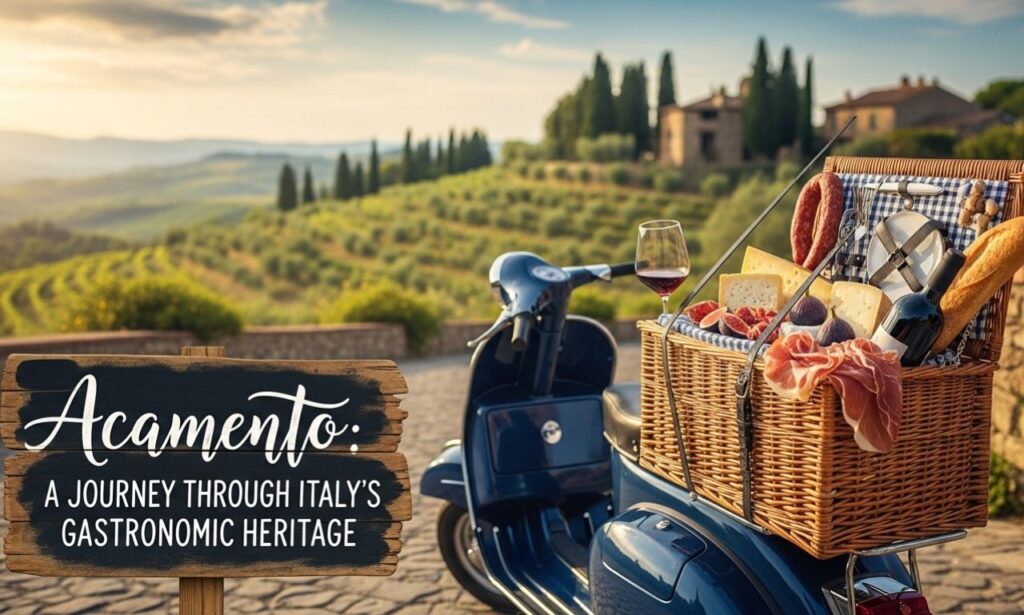Italy is a treasure trove of culinary delights, each region boasting its own unique flavors and traditions. Among these gems lies acamento, a fascinating aspect of Italian cuisine that invites you to explore the rich tapestry of ingredients and techniques passed down through generations. As we journey through this gastronomic heritage, you’ll discover not just the essence of acamento but also how it reflects Italy’s culture and history. Whether you’re a seasoned chef or an enthusiastic home cook, understanding acamento will inspire your meals and elevate your appreciation for Italian cooking. Get ready to dive into the world where food becomes an experience!
What is Acamento?
Acamento is a culinary term that embodies the heart of Italian cooking. It’s more than just food; it represents tradition, culture, and passion.
At its core, acamento refers to the art of combining ingredients in a way that highlights their natural flavors. The emphasis is on quality over quantity. Fresh herbs, seasonal vegetables, and carefully selected meats often take center stage in these dishes.
The beauty of acamento lies in its simplicity. It encourages cooks to explore local produce and time-honored techniques passed down through generations. This connection to heritage makes each plate a story waiting to be told.
In essence, acamento invites everyone into the kitchen—whether you’re a seasoned chef or an enthusiastic home cook—to celebrate Italy’s rich gastronomic landscape with every bite.
The History of Acamento: From Ancient Rome to Modern Times
Acamento has roots that trace back to Ancient Rome, where culinary practices began to intertwine with local traditions. Romans celebrated seasonal ingredients and shared meals as a central part of their culture.
As time progressed, acamento evolved through the Middle Ages. It absorbed influences from various regions, creating a diverse tapestry of flavors. Each area added its own twist, reflecting local produce and customs.
By the Renaissance, this culinary art form blossomed further. Nobles sought exquisite dishes for grand feasts. Recipes were documented in lavish cookbooks, preserving techniques for future generations.
Fast forward to today: acamento remains vibrant across Italy’s landscapes. Urban chefs pay homage to traditional recipes while also experimenting with modern twists, ensuring that this rich history continues to thrive amid contemporary tastes.
The Ingredients and Techniques used in Acamento
Acamento thrives on simplicity and quality. The core ingredients are often fresh, locally sourced, and seasonal. Staples include ripe tomatoes, aromatic herbs like basil and oregano, and a variety of cheeses such as mozzarella or Parmigiano-Reggiano.
The cooking techniques are just as vital. Slow-cooking is common to develop deep flavors in sauces. Grilling adds a smoky essence that enhances the dish’s character.
Moreover, handmade pasta plays a pivotal role in acamento dishes. It’s crafted with care from flour and eggs, creating textures that elevate the dining experience.
Olive oil serves as both an ingredient and a cooking medium. Its rich flavor contributes significantly to the overall profile of any dish prepared within this culinary tradition.
These aspects come together harmoniously to create meals that celebrate Italy’s rich gastronomic heritage while maintaining authenticity at their core.
Popular Dishes and Regional Variations of Acamento
Acamento boasts a rich tapestry of dishes, each infused with regional flair. In Emilia-Romagna, for instance, you’ll find tortellini—a delicate pasta stuffed with meat and herbs. This dish embodies the heartiness typical of northern Italy.
Travel south to Naples, and you’ll encounter a unique variation featuring seafood. Here, acamento influences local pizza styles that celebrate fresh ingredients from the Mediterranean.
In Sicily, it’s all about layers. Caponata showcases eggplant combined with sweet and sour flavors—an interpretation that reflects the island’s diverse cultural history.
Each region interprets acamento through its own lens, creating flavors that resonate deeply within their communities. Whether it’s in bustling markets or cozy kitchens, these variations tell stories of tradition and innovation. Each bite is a journey through time and place—a true testament to Italy’s culinary heritage.
Experience the Culture of Acamento: Festivals, Traditions, and Family Meals
Acamento is more than just a culinary term; it’s a vibrant part of Italian culture. Across the country, various festivals celebrate this rich gastronomic heritage. Each region has its own unique twist on traditional dishes that highlight local ingredients.
Family meals play a crucial role in preserving acamento traditions. Generations gather around tables to share recipes passed down through time. These gatherings are filled with laughter, storytelling, and, of course, delicious food.
During festive occasions like Sagra della Pasta, communities come alive with flavors and aromas wafting through the streets. Here, locals showcase their talents while visitors indulge in regional specialties.
Moreover, these events often feature cooking demonstrations where chefs reveal secrets behind classic acamento dishes. It’s an immersive experience that deepens appreciation for Italy’s diverse culinary landscape and fosters connections among those who share a love for good food.
The Influence of Acamento on International Cuisine
Acamento has made waves beyond Italy’s borders, leaving a mark on international cuisine. Chefs around the globe have embraced its rich flavors and techniques, incorporating them into their own culinary creations.
The art of combining fresh ingredients with time-honored methods draws food enthusiasts from various cultures. Asian fusion dishes often showcase Acamento-inspired elements like herbs and spices that enhance depth.
In North America, Italian restaurants frequently feature Acamento-style sauces that celebrate simplicity yet offer robust flavor profiles. This approach has led to innovative variations that still pay homage to traditional roots.
Furthermore, street food vendors are also catching on. From gourmet tacos infused with Italian cheeses to pasta bowls layered with global influences, the adaptability of Acamento continues to inspire creativity in kitchens worldwide.
This cross-cultural exchange reminds us how food can connect people across different backgrounds while maintaining its authentic essence.
How to Incorporate Acamento into Your Cooking at Home
Incorporating acamento into your cooking at home can be a delightful journey. Start by stocking up on fresh, high-quality ingredients typical of this culinary tradition. Think ripe tomatoes, fragrant herbs, and artisanal cheeses.
You can experiment with traditional recipes or create your own fusion dishes. For instance, try making a classic acamento sauce to drizzle over pasta or use it as a base for hearty stews.
Don’t forget the importance of technique; slow-cooking enhances flavors beautifully. A little patience goes a long way in achieving that rich taste.
Invite friends or family to join you in preparing meals together. Sharing these moments not only enriches the experience but also deepens the connection to this time-honored cuisine.
Always keep an open mind when tasting and adjusting seasonings to suit your palate—every cook adds their unique touch!
Conclusion
Acamento is more than just a culinary term; it’s a vital part of Italy’s cultural fabric. This rich gastronomic heritage weaves together history, tradition, and the essence of community. As you explore its depths through various dishes and regional variations, you’ll find that acamento reflects the soul of Italian cooking.
The techniques and ingredients used in acamento invite creativity in your kitchen. By incorporating these elements into your meals at home, you can bring a taste of Italy to your family table. Whether it’s for special occasions or everyday gatherings, celebrating this culinary tradition fosters connection with loved ones.
With its influence stretching far beyond Italy’s borders, acamento continues to inspire chefs and food enthusiasts worldwide. Embracing this journey allows us to appreciate not only what we eat but also the stories behind each dish.
As you venture further into the world of flavors associated with acamento, remember that every meal has a story waiting to be told—a celebration of life itself through food.






